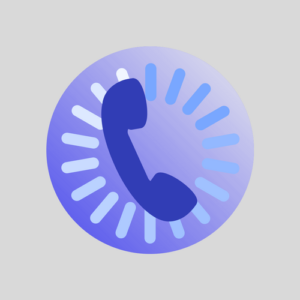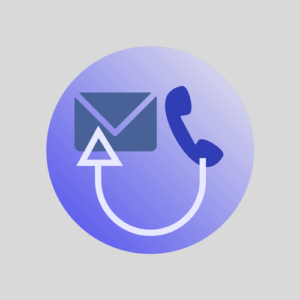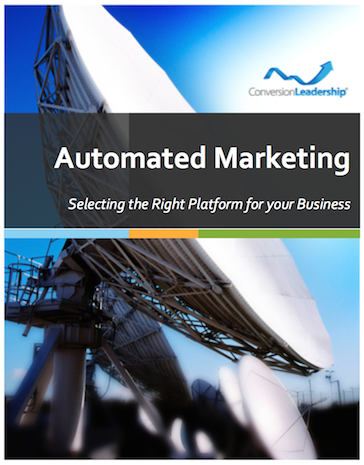Build Rapport with Prospects: 12 Step Automated Process

Developing familiarity is one of the most effective techniques you can use to build rapport with prospects.
When your sales representative is trusted by a prospective client, establishing a friendly relationship makes it easier to convert.
When it's a cold lead though, this familiarity needs to be built up through a series of touch-points that establishes a "connection" between your business and the prospect.
Build Rapport by Increasing Customer Touch-points
We had a client come to us from the green cleaning industry with a problem. A sales conversion problem.
How could it be that, with one of the most advanced quoting systems and the ability to provide an instant quote on-premise, their conversion rates were subpar?
After asking questions and analysing what they were doing, we discovered that even though they had built their own quoting app that allowed them to do on the spot quoting, but they were being disadvantaged because they they had a sales process that was either virtually non-existent or it was extremely inefficient.
To their credit, the sales reps only needed to meet with the prospect once before being able to provide all necessary information and pricing.
Their competitors however were still using pens and paper and often couldn’t provide a quote on the same day, let alone the same week.
This meant that the prospect had to chase these other companies for quotes.
Whilst it may have appeared to be inefficient, a little psychological trick meant other service providers were actually able to build rapport by taking advantage of the larger number of touch points and interactions with their prospective customer.
Getting to know the receptionist's name, playing telephone tag with the owner - it all adds up to a increased familiarity and, believe it or not, rapport.
Instead of reverting back to the “old inefficient way” of quoting, the sales conversion process was extended to inject a new series of touch points in the pre-sales process to build up greater familiarity.
We did this with volition and...automated it with Infusionsoft!

The 12 Steps that Helped a Cleaning Company Build Rapport with Prospects and Increase Conversions
Here is an insiders, behind the scenes, look at the pre-sale strategy that was created for our Client that helped them build rapport with prospects and increase conversions.

Touchpoint 1 – Introductory Email
When the appointment is set, follow up with an introduction email that contains a photo of the person who is going out to inspect the site and a short story about what they can expect from the appointment.
Why this is important
Sending a photo gives a face to the person that the prospect is going to meet; moving the communication from impersonal to intimate.
And, you're already able to start creating familiarity.

Touchpoint 2 – Position Your Company
Use a story to point out how when a business is organized in one area, such as providing a quote, that they are going to be organized in other areas too, like service delivery.
Why this is important
This begins positioning your company as an efficient and easy to work with company when compared to the disorganised competitors they are also getting quotes from.

Touchpoint 3 – Introductory Phone Call
Call your prospect to touch base prior to your appointment. Use the phone call as an opportunity to introduce yourself, see if they’re still available for the meeting and ask about car parking in the area.
Why this is important
The psychology behind asking about the car parking is to have the prospect feel knowledgeable and helpful to you.
This emotionally positions them to be confident and feel respected in the relationship with you.

Touchpoint 4 – Ask for Permission to Follow Up
During the on-site inspection while preparing the quote, get the prospects verbal permission to allow you to follow up with a few questions later.
If you have any pamphlets, samples or freebies from your work, now is a good time to offer them to your prospect.
Why this is important
Asking for permission continues to place the prospect in the controlling position of the relationship.

Touchpoint 5 – Follow Up Email
The day after the on-site inspection for preparing a quote, send a follow up email that thanks the prospect for their time and sharing information about themselves/ their business with you.
Ask if they have any other questions about the quote or your services in general.
Why this is important
Thanking the prospect for their time continues to build confidence and respect into the relationship.
You want the prospect to connect with positive and confident emotions when dealing with your company.

Touchpoint 6 – Offer Helpful Information
Email a document that provides information about your services and/or products and position the information in a way that will support the client’s buying decision (eg. “Something I thought may be helpful with your decision...”).
Why this is important
By now, your prospect will have investigated your competitors.
This information adds value to your business’ relationship with the prospect and may cast doubt or raise questions about your competitors' ability to deliver.

Touchpoint 7 – Questions to Help Prepare your Business
Call your prospect and ask a couple of questions that will help your company prepare for working with them. Eg: How often would you like us to report…
Prompt them with frequency if they sound uncertain - Weekly? Monthly? Quarterly? Annually?
Are there any monitored security arrangements?
Why this is important
This wording presupposes that you have already won the business with the prospect. They’re unlikely to pick up on this consciously, and it will begin to form the idea in their head that they should say 'Yes' to contracting you.
Prompting the prospect with answering options, makes it easy for them to make a quick decision; which creates confidence, again reinforcing how good it feels to work with you.

Touchpoint 8 – Testimonial
Use a testimonial from one of your existing clients and turn this into a story that increases the emotive persuasion of their current situation.
The message structure starts with you introducing the story. The writer’s voice then swaps across to your client as the storyteller.
Switch to talking about how wonderful your company is. Tell a story which explains who they are and the bad thing that happened. As it unfolds, your company becomes the hero.
The message then reverts back to your voice and closes out with a friendly sign-off.
Why this is important
Allow your prospect to imagine themselves as the client who experienced a tricky situation and was been helped out by your company.
You are building on the presupposition that they've already become one of your clients.

Touchpoint 9 – Educate Prospect About Your Business
Provide educational information about your business and its services.
Highlight your unique selling point (USP) and what you stand for in your industry.
Why this is important
Introduces further benefits of using your company’s services, without actually making a direct comparison between yourselves and your competitors.
This is a straightforward soft-sell technique.

Touchpoint 10 – Top Five Tips in Overcoming a Problem
Think about your prospect and their specific needs in a scenario in which they would most need your services – an emergency. Break down that scenario and offer your Top 5 tips in overcoming that problem.
Why this is important
This will allow the prospect to picture your company as their saviour in this situation.
It also demonstrates that you know exactly what they need and when they need it and that you are experienced across all areas of your industry.

Touchpoint 11 – Call If There Are Any Last Minute Updates
Call and ask if it is not too late to send them something to add into the quote/proposal you’ve submitted for review.
Then email them – up to date testimonials, copies of accreditation or certificates of certifications like ISO standards etc.
It can be literally anything.
Why this is important
You’re asking them for permission, this continues to build rapport, confidence, trust and respect in the relationship.
Your consistent communication to this point means that the prospect now knows who you are and what company you are from.

Touchpoint 12 – The Final Email
Send through a final email, “Why are you waiting to make a decision?” There are X days till the quote you received from ‘your company’ expires.”
Express concern for them as they haven’t been able to make a decision yet.
Are they likely still waiting for other contractors to submit quotes?
Explain that they may find themselves in difficulty with pricing changes and offer them the possibility of extending the quote validity so that the price is locked in for them.
Why this is important
We’re creating an attitude of gratitude in the prospect. This sets up an alliance between you and them – you are protecting them from negative fallout from their manager.
We are also encouraging a phone call, which changes the interaction from you chasing them, to them getting familiar with calling on and trusting you.
This switch alone is a big steps to build rapport with prospects.
Build Rapport with Prospects by Always Responding
Through each step of the process ensure that the communication is always in flow.
If the prospect has a question, make sure you always respond.
If you don’t have the answer, acknowledge their query with a response, find the answer and get back to them.
The newly designed process was automated using Infusionsoft, helped our Client build rapport with prospects and, when it came down to it, let Client focus on adding real value to the prospect relationship with minimum time commitment from them.
More importantly, when the sales reps finally attended the prospect appointment, the prospect felt like they'd known the sales rep for some time.
The increased familiarisation moved the decision-making process along and gave the sales reps an even easier opportunity to close the deal.
Will an increase in touch points help improve your conversion rates?

